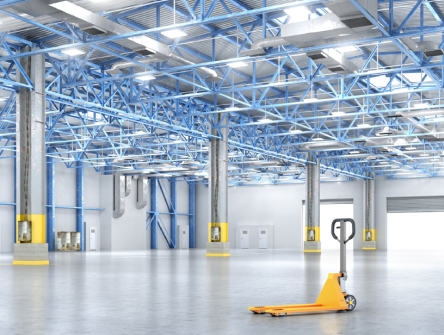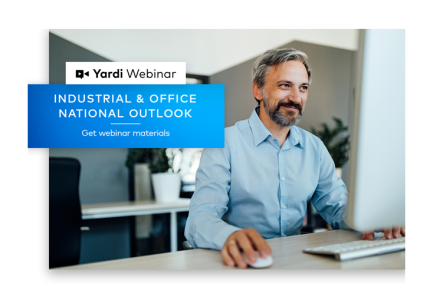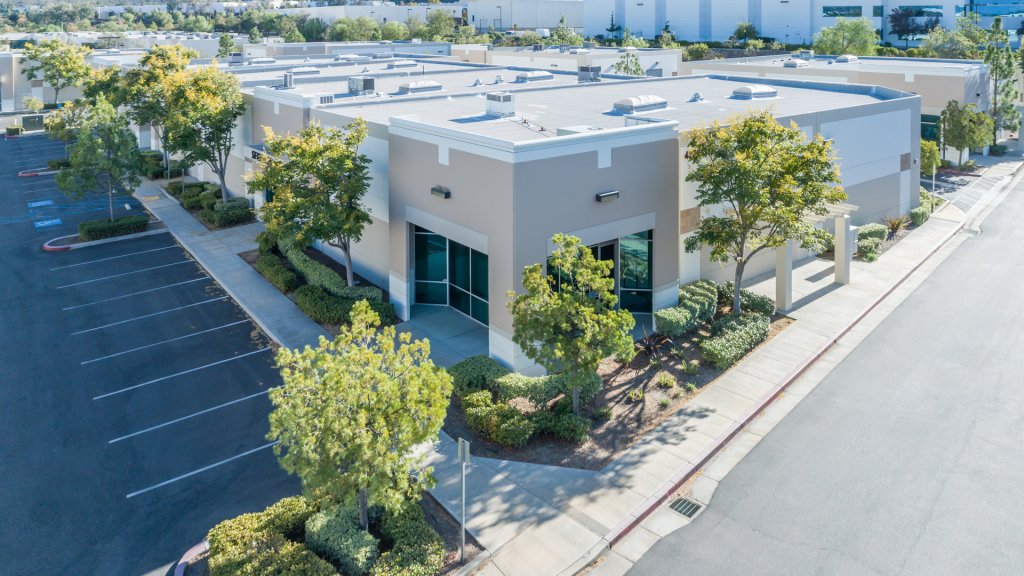It’s a rosy outlook for the newest real estate sector to be featured in a CommercialEdge monthly report. In 2020, the industrial sector was considered the top performer of all major real estate sectors. Industrial rents averaged $6.38 per square foot in December 2020, a 4.8% increase over the last 12 months, according to the first-ever CommercialEdge Industrial Monthly. All of the top 20 markets covered in the report saw at least some measure of growth in average rent over the last year. The ongoing industrial report will cover data on rents, occupancy, supply and transactions, as well as key economic indicators. “Rent growth across the board bucks the trend of other commercial real estate asset classes. Both multifamily and office have a substantial share of markets with falling rents and increasing vacancies, something not seen among the top 20 industrial markets,” note the analysts. Demand for e-commerce infrastructure and a huge boost in online sales during the pandemic have been a boon for industrial assets. Today, e-commerce accounts for nearly one-fifth of core retail sales. In 2020, a record 228.4 million square feet of industrial space was delivered, the most new space completed this century. That milestone is a further indicator of the health of industrial real estate. These projects were well underway before COVID-19 induced a demand surge for industrial space, signifying that the industry was already on the upswing before 2020 put things into overdrive. Find the full CommercialEdge Industrial Monthly for...
Opposite Outlooks
For Industrial and Office sectors
It’s a tale of two outlooks for the industrial and office real estate sectors, reported the experts from Yardi Matrix and CommercialEdge in a commercial real estate webinar presented on Nov. 11. As the end of 2020 nears, each market has a different trajectory. For owners and investors in the office sector, the full impact of the pandemic and its impact on the way employees work, especially in the knowledge and technology sectors, has yet to be unveiled. Major office properties tend to operate on long leases, so while rent remittance has been generally solid this year, as leases come to term in 2021 things could change. The big question, said Yardi Matrix vice president Jeff Adler, is what use of office space looks like in the future. One thing 2020 has taught us is that it likely doesn’t look like the old model of spending five days a week in a cubicle. “There is a re-evaluation of ‘what is the purpose of space?’ Was the purpose of that space that people got things done there? Or was it a culture purpose? If it was simply to do a task, it’s become clear that task can likely be done at home. How space is used, why space exists and why you need it in the first place is going to be reimagined,” Adler said. “What kind of office footprint do you actually need to achieve the business goals that you have?” The answers to those questions will determine the floorplans and lease terms of offices post-pandemic. Also at play: where they’re located (public transit use is still dramatically decreased) and how many workers will come to the office on any given day. Right now, going back to a 5-day office work week seems highly...
Innovating in Industrial
Delin Property goes out-of-the-box
The traditional image of a warehouse is that of a windowless box with little visual appeal, inside or out. That perception is giving way to new designs that use technology to integrate efficiency with safety and opportunities for constructive workforce interaction. Delin Property, the leading pan-European real estate investment developer in the logistics market, is on the leading edge of that transformation. Delin’s status as both a logistics real estate developer, asset manager and investor provided a vantage point for envisioning a new type of storage facility. “We’ve always tried to be on the forefront of design and technology, and to use that motivation to create a better experience for owners, tenants and investors,” says Bart De Sitter, development director for Delin Property’s operations in the Netherlands. Elevating the human element Delin Property began its redesign initiative by recognising that labour costs are a warehouse’s largest operational expense. That made improving the experience for both blue- and white-collar workers the company’s top priority. “A grey box with no windows isn’t sufficient today. You have to create a pleasant workplace to attract and retain the 1,000 to 1,500 workers who staff a warehouse, many of them millennials who have higher expectations of workplace amenities than previous generations,” says Jay Lelie, asset and leasing manager in the Netherlands. A design along these lines incorporates features such as windows, green spaces and terraces for breaks and meals. “Windows really make a difference when you’re in there for eight hours – not just to let natural light inside but to let workers see outside. Our clients tell us this feature really helps reduce absenteeism, illness and turnover,” according to Lelie. Along with creating an aesthetically desirable space, Delin Property’s new approach to warehouse design sought to end the sector’s historical workplace separation of white collar and blue-collar workers. “As interactions between managers and their workers become more complex in the e-commerce environment, working closely together onsite becomes more important. We wanted to create an environment that puts a premium on natural interaction and ends separate entrances and canteens and other arbitrary physical or mental barriers,” De Sitter says – although, of course, this scenario can’t be fully realised as long as COVID-19 remains untamed. Delin Property also put a premium on safety, plotting car and delivery truck routes well away from pedestrian traffic. Other challenges in the redesign included maximising parking spaces in tightly constricted urban locations. Using tech to strengthen client bonds Back when Delin Property was solely a property investor, it outsourced most of its direct contact with clients. “That was a logical choice at the time, but it ended up making us too remote from tenants and created too many steps between us and them,’ De Sitter said. “We wanted to manage the communication stream in a way that lets us focus on our relationship with clients rather than on administrative tasks and compiling reports.” Toward that end, the company has adopted advanced real estate management software solutions from Yardi that enable execution of multiple business operations from a single connected platform and promote staff efficiency and client service. Delin Property’s invoice processing, for example, will be paperless for tenants and driven by automated workflows all the way to vendor payment. Similarly, automated project management will help keep the company’s construction projects on time and on budget by providing real-time views of data across multiple capital projects. Meanwhile, tenants will have the convenience of making payments, communicating with Delin Property, accessing documents and submitting maintenance requests online or with a remote device. Other solutions will automate preventive maintenance and other elements of facility management while housing records for equipment and maintenance in one database. A vision rooted in simple changes All of these design and technology elements combine, according to De Sitter and Lelie, to create a future vision that encompasses “a high-end office with a facility behind it that...
Yardi Proptech Insights
With Delin Property
In the latest edition of Yardi Proptech Insights, Yardi regional director Richard Gerritsen speaks with Bart de Sitter and Jay Lelie of Delin Property about the company’s efforts to design innovative warehouse spaces that are efficient and functional as well as attractive for workers. With the growing need to attract and retain ecommerce employees for order fulfillment, warehouse spaces with natural light and employee-friendly amenities like lunch and break spaces are more important than ever. Interconnected spaces for warehouse activities and offices for managers and admin staff are also a priority. “We are hearing from our clients that retention of personnel is becoming more and more difficult, and we want to help our clients make a difference for their workforce, and help their employees be proud when they arrive at work,” said de Sitter, the company’s development director. That means moving away from boring, box-like industrial development norms. “In our designs we put the labor force first, creating a warehouse that provides a better workplace,” said Lelie, asset and leasing manager. Design schemes show massive windows, creative office integrations, and terrace-like areas for worker breaks. The company invests and develops industrial space in the Netherlands, UK, and Spain. Use of forward-thinking PropTech is also important to Delin Property, which continues to adapt and improve its technology management platform using Yardi products. Improving communication with tenants, on site safety and automating business processes have been two PropTech priorities for the company, shared de Sitter and Lelie. Watch the video below for more PropTech insights from this valued Yardi client. Learn more at...
Varying Impacts
Yardi Matrix Commercial Outlook
Yardi Matrix continued its series of comprehensive market impact webinars on May 13 with an in-depth look at the state of the commercial real estate industry, presented by Jeff Adler, vice president of Matrix, and Rob Teel, senior vice president of global solutions at Yardi. Both provided data and insight into the crucial question Adler introduced at the start of the session: How do we move forward, past the lockdown and into the recovery phase? “Despite the herculean efforts by the federal government to keep businesses afloat, there is still more pain to come,” Adler said. And for each sector of commercial real estate, the road ahead will look different. Optimistic outlook for industrial Across all real estate sectors, industrial and multifamily are holding up best during the COVID-19 pandemic. “They were also the two best performing sectors before this hit,” Adler noted. April rent collections for industrial averaged around 86-87 percent, so the sector is not entirely immune to nonpayment, but looks good compared to retail. Dependence on e-commerce for home-delivered supplies and other purchases has helped industrial stay stable. In some smaller markets ideal for last-mile delivery siting, industrial rents are even edging up. There’s also newfound demand for cold storage due to changes in the grocery market. Office holding up, but changes expected All things considered, “office is in pretty good shape,” said Adler. “Though coworking is hurt pretty bad.” April collections of office rents were in the 85 percent range, and are expected to stay high for buildings with large, well-capitalized tenants. Office may see significant changes as states return to work, however. Concern looms for office hubs like New York City, where dependence on public transit and crowded elevator rides in skyscrapers are both hard to reconcile with ongoing social distancing requirements. “There is going to be a rethinking of the footprint. How much physical space and face to face contact do you need to keep (corporate) culture together?” Adler asked. Teel noted that there has been a spike in interest in serviced, suburban office space from firms who want to return workers to the office but in a less congested setting. And coworking is likely not dead, but will have to return either long-term or with major changes to accommodate social distancing needs. A rough road for retail “This is where the carnage is,” Adler summarized bleakly. “And for retail, the snapback is not likely to happen anytime soon.” April rents were paid by around 45 percent of retailers, and May is expected to be far worse. Major retailers like J.Crew and Neiman-Marcus have already declared bankruptcy, although in some cases the pandemic merely sped up a predetermined outcome. Brick and mortar stores were already struggling with online competition well before the pandemic. “We are social animals, we will gather again, it will just take a bit of time for it to happen. And there will be pain in the sectors that depend on the gathering of people,” Adler said. Grocery-anchored retail continues to outperform, but is still taking a hit due to closed secondary tenants. For more in-depth information on the state of the commercial real estate market, view the latest Yardi Matrix report. Yardi observes latest CRE technology trends Teel delivered an overview of the tech requirements that commercial owners and managers are now finding to be essential in today’s changed world. Accounts receivable tracking for deferrals and concessions is crucial, as is accurate documentation and tracking of tenant status. Yardi will soon introduce a new CRE tool, LeaseManager, to help with that. But perhaps the biggest tech shift will be a paperless push. It will help CRE improve contactless business practices like vendor invoicing and electronic payment fulfillment. “This is one area that’s overdue for disruption and change and it’s happening now,” Teel said. He estimated that physical checks still make up 90 percent of the payments that Yardi clients...
Commercial Outlook
Part II: Industrial and Retail
Last week, Yardi Matrix hosted three webinars that provided insight on how the COVID-19 pandemic is impacting the self storage, multifamily and commercial real estate markets. Let’s look at the insight on the commercial market, which is extensive. This post continues our first commercial sector recap, which you can read here. Feast and famine in industrial The industrial sector witnesses mixed results from shelter in place mandates. E-commerce is roaring as consumers and businesses go online to purchase necessities without leaving home. Logistics and distribution are regarded as essential services, largely immune to shut down mandates. These niches are among the few still adding jobs. Walmart has posted 150,000 new positions, followed by Amazon with 100,000 and CVS with 50,000. They’re offering enhanced benefits as well as boosted hourly wages. Not all industrial tenants are forecasted to whether the downturn. Small business that occupy multi-tenant industrial spaces could dissolve. Most tenants aren’t positioned for unlimited viability. Multi-tenant, smaller organizations compose nearly 45% of industrial space which will have a notable effect on overall industrial performance. Retail on thin ice with few exceptions Grocers are thriving, but the boon is not expected to last long after the COVID-19 recovery. Before the pandemic, cash flowed away from grocers to restaurants and meal kit delivery services. Social distancing has hamstrung both of those competitors, forcing consumers back to store aisles. Grocers are hiring as well as grocery deliver companies. Such businesses are expected to add 300,000 workers over the next three months. But as the crisis subsides, grocer revenue will return to normal. No matter what, its clear that retail landlords will be hit hard. Social distancing policies have reduced and, in many cases, eliminated transactions at brick-and-mortar stores, which were already experiencing a decline with the...
Midsized + Mighty
Midsize Tenants Dominate Industrial
Midsize tenants are driving the demand for industrial space in metropolitan areas. As a result, their needs shape the direction of and development within the industry. Major Markets for Midsize Tenants Midsize industrial tenants occupy space from 50,000-sq.-ft. to 300,000-sq.-ft. Yardi client and real estate services firm Avison Young lists key markets for midsize tenants as Indianapolis, Chicago, Dallas and Atlanta. Between January 2017 to June 2019, Chicago tenants signed 872 industrial leases averaging about 111,629 sq. ft. In the same timeframe, Atlanta tenants signed 320 industrial leases with an average size of 113,243 sq. ft. Similarly, the average space for tenants in Dallas is recorded as 107,265 sq. ft. Indianapolis has offered some of the largest parcels with industrial tenants signing 41 leases averaging about 146,341 sq. ft. “Indianapolis’s stability, low cost of doing business, and central location are attractive to distribution tenants and investors alike,” explained Sean McHale, principal at Avison Young’s Indianapolis office in an interview with NREI. “We expect that rental rates will remain steady or rise slowly and cap rates will compress well into 2019.” Making Room for Last Mile Delivery Midsize boxes are in high demand due to an increased need for last mile delivery sites. The price for such spaces has increased from $59.56 per sq. ft. in June 2017 to $68.71 per sq. ft. in June 2019. “I think we are going to continue to see a focus on overlooked infill sites being repurposed to meet the needs of last mile logistic tenants,” reports Chris Nebenzahl, operations manager for Yardi Matrix. “These could be vacant retail centers and big box stores or outdated back office buildings.” He adds, “Last mile and ecommerce tenants are here to stay and getting much of the attention, but I wouldn’t...
Industrial Strength
Matrix Market Report
Yardi Matrix took a close look at the U.S. industrial real estate market’s performance in the first half of 2018 and found plenty of positive signs. Indications of the sector’s strength include: Strong demand for space driven by year-over-year e-commerce sales growth of 15.4% Nearly 125 million square feet of industrial space coming online 7% year-over-year rent growth A national vacancy rate below 5% in the first quarter, the lowest since 2010 Commercial real estate-leading investment volume “Demand is stronger than ever” in every industrial subsector, the report says, with warehousing, manufacturing and flex space accounting for most of the occupancy gains. Demand was strongest in California’s Inland Empire, followed by Chicago and New Jersey. The industrial sector continued to benefit from rising e-commerce sales, which totaled $120.4 billion in the second quarter alone and drove the need for distribution centers near dense population areas. Over 90% of the first half’s new supply was warehouse and distribution space, with more than 238 million square feet of additional space under construction at mid-year. In markets where available land for development is scarce, developers focused on renovation and site remediation projects, expecting to recover costs with higher rents. Industrial rents continued to increase in most markets, spurred by the exceptional demand and lack of excess space in the top logistics markets. Rents averaged $6.29 per square foot at mid-year, up 7% year-over-year. “Expect rents to further increase through 2018 as the quality of available inventory improves due to upgrades and addition of new space,” the report says, noting that a slight deceleration might follow in 2019 as projects now under construction add to available inventory. The national industrial vacancy rate, 4.9% in the first quarter, was largely due to companies snapping up space before it was...
Tech + Logistics
Great Britain Automation Outlook
The rise of ecommerce has revolutionised the way we shop – but it has also transformed property logistics. Technology is helping retailers and carriers to manage stock movements, in-store click & collect and home deliveries, but it is also a costly investment. Who will pick up the tab? How are developers, investors, distributors and occupiers using ‘smart logistics’ to serve their customers? Yardi brought together a panel of thought leaders in a roundtable at Property Week’s Sheds Conference in Birmingham. The panel: Paul Crosbie, investment manager, M&G Real Estate Jonathan Gardner, head of asset management, Delin Capital Nick Kay, development director, St Modwen Properties Len Rosso, head of industrial and logistics, Colliers International Charles Spicer, Midlands industrial and logistics director, Savills Claer Barrett, personal finance editor, Financial Times (chair) CB: What do you all think the ‘shed of the future’ will look like? How will the needs of occupiers change over the next five years? LR: I don’t think we should call logistics space ‘sheds’ anymore. It is a much more technologically advanced product than the name suggests. Drones, robots and automation are all on the horizon, but I think the biggest change we’re seeing right now is higher eaves heights and mezzanine floors. Occupiers want to use all the space they’re paying for – not just the ground floor. PC: People are getting very excited about drone deliveries, but they are more likely to be used for rural areas rather than built-up urban locations where their use will be more restricted. JG: Occupiers will still be using vans and lorries, charge can bypass the 200-mile mark, it will really make a change to the use of this technology. NK: And look at the activity going on inside the shed. The rise of the ‘sharing economy’ is a big trend. We’ve seen Airbnb; now there’s a similar business called ZupplyChain for third- party logistics [3PL] companies with excess space to lease it out. If you can find space in areas of undersupply, it would make the market more fluid and ease the supply crunch. CS: The shed of the future won’t be one size fits all. Our market is very varied and diverse – so a manufacturer’s requirements are very different to that of a pure logistics operator. That said, we’re already seeing multi-level facilities and in the future we could well see subterranean ‘sheds’ in high-density urban areas. At the Property Week Sheds Conference, we’ve just heard a number of occupiers say they would not be averse to the idea of sharing space in the future so I anticipate more multi-user facilities as is commonplace in mainland Europe. There are covenant and lease issues but nothing that is insurmountable. We may see a company that is institutionally acceptable taking a ‘master lease’ and then space split between multiple users and companies in a Regus-type model. CB: As investors, how happy would you be with the idea of a shared shed? PC: A facility shared by a number of operators would be interesting if there was an overriding lease. It could give investors more comfort if there was some diversity alongside the main tenant. LR: DHL has been talking about that model for the past five years, but it hasn’t happened yet. JG: Well, it has happened in mainland Europe. 3PLs want to match their lease lengths with their contract terms. If they have a three-year contract, they don’t want to take a five-year lease. However, this comes at a cost – they accept they will have to pay a much higher rent in some locations. Other 3PLs will take a big lease and will stack the space with three or four different customers’ kit. Even then, there could be quite tough conditions to meet, such as 50% of the space being occupied by one client for the full length of the lease. PC: I agree that the sheds –...
Yardi Think Tank
Industrial and Commercial
LONDON – Industrial property has emerged as one of the strongest performing asset classes this year, apparently brushing off the threat of Brexit as consumers shop – or rather, click – until they drop. The rise of e-commerce means tenant demand is robust, with record rents being achieved in tightly-constrained urban areas where logistics space is competing with residential. However, occupiers are having to invest heavily in technology. In a continuing series of think tanks, Yardi brought together a panel of experts to discuss these issues in the European real estate market. Panelists: Claer Barrett, Financial Times – Chair Alan Holland, Business Unit Director, Greater London – Segro Richard Croft, Chief Executive – M7 Real Estate Mark Bowden, Partner – Caisson Investment Management Michael Williams, Investment Manager – M&G Real Estate Kevin Mofid, Research Director – Savills CB: The good news is that we’re seeing healthy yields and rental growth on industrial space, particularly in the Greater London area – but is this mainly because so much of it has vanished in the past decade? AH: The pressure on land for industrial and urban logistics is immense, particularly in areas of population concentration where developers like Segro are competing with house builders. According to the GLA, around 700 ha of industrial land has been lost in Greater London as places like Nine Elms, Old Oak Common and the Olympic Park ha ve become residential areas. That’s the equivalent of seven times the size of Regent’s Park – it’s gone and it won’t be replaced. KM: Since 2009, Savills research shows the supply of existing warehousing stock has decreased by 70 per cent. But at the same time, take-up has risen from a long-running average of 18m sq ft per year to 22m sq ft in the...
UK Asset Management
Recovery + Reinvention
Asset Management companies in the UK have experienced several years of growth due to foreign capital flowing into the country during the lean years. As rents stabilize, the rate of growth is clearly unsustainable. Yardi brought together several asset management experts to discuss how asset management will reinvent itself during economic recovery and prosperity. According to Richard Williams, managing director asset services UK, CBRE , The answer boils down to the company’s country of origin. Far Eastern and Middle Eastern investors continually require traditional asset management services. “That’s where most of our team’s work has come from in the last year. Although they tend to buy trophy properties, we spend a lot of time teaching them the fundamentals of asset management. It’s impossible for them to do this from Asia where they’re based.” Locally, there is a different story. Shaun Hose, director of asset management, BNP Paribas Real Estate, explains, “Now, the market has improved to such an extent that the yield shift alone won’t meet target returns. Institutional investors are looking for assets they can intensively manage and have levers to pull. The regions are high up on the agenda for UK investors as occupier markets come back, but London markets continue to be dominated by foreign investors.” This leaves local investors seeking a select few assets that will offer the value that they need: core plus assets with both income and an angle, and doughnut assets that are inside the M25, but outside of central London. Such properties include multi-let industrial, or distribution centres, with their low vacancy rates, resilience, and growing popularity. Such centres are often occupied by online retailers, powerhouses whose bravado is far from diminishing. There is also a notable amount of obsolete properties that could use a second wind....










